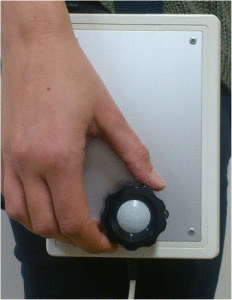
Sex, gender, ethnicity, age, and access to care are important factors in determining if populations may benefit from the results of clinical studies. 1994 saw the implementation of a U.S. federal law (the 1993 NIH Revitalization Act) which requires researchers conducting studies funded by the National Institutes of Health, to include women as well as men in clinical trials and analyze the results taking sex or gender into consideration. Inclusion of women in research requires changes to the way in which the research is designed.
National Institutes of Health, to include women as well as men in clinical trials and analyze the results taking sex or gender into consideration. Inclusion of women in research requires changes to the way in which the research is designed.
In this paper by Mazure and Jones, the authors chronicle the changes in the recommendations and requirements of both the National Institutes of Health and the U.S. Food and Drug Administration for the acceptable conduct of research in relation to sex and gender. The importance of ensuring that women are represented in clinical trials and biomedical research and ultimately obtaining results which can lead to improved health and healthcare is highlighted.
The effect of abortion on having and achieving aspirational one-year plans
There are a variety of reasons women choose to have abortions. It has been reported that financial circumstances, preparedness to have a child and relationship problems are among the top reasons that women opt for an abortion. A number of the reasons suggest that proceeding with an unintended pregnancy can be regarded as interference in future plans and that an abortion would help in achieving personal goals. In this prospective cohort study of women recruited from 30 abortion facilities across the United States, Upadhyay and colleagues report that ensuring women have access to an abortion should they choose to, enables them to be optimistic about the future and achieving their aspirational life plans.
Cervical cancer is one of the most common types of cancer in women globally. HIV/AIDS is also a major cause of death worldwide, more so in developing countries with Sub-Saharan Africa being the most severely affected. It has been reported that women with HIV infection have a higher risk of developing cervical cancer. Kumakech and colleagues conducted a qualitative study in three districts in Uganda to explore perceptions and preferences of community members regarding the integration of HIV and cervical cancer screening services in a single-visit approach.
They found the perception of integrating HIV and cervical screening to be favorable. The benefits of the integration are thought to outweigh the challenges, which include fears of being found positive for both HIV and cervical cancer and the consequences such as stress and social conflicts. Other challenges which were highlighted include concerns that integration of the screening may prolong waiting times at the health facility and induce tiredness in both healthcare providers and the women. Therefore, it is essential when considering an integration program, to also take the perceived challenges and preferences of the community members into account. The authors conclude that there is a need for a pilot study to investigate integrated HIV and cervical cancer screening at centers in Uganda and other related settings to validate the findings of this study.

Mammography is a procedure which can be painful for some women. De Groot and colleagues carried out an observational study to gain an insight into pain-preventing strategies in mammography. Throughout the breast compression cycle, they simultaneously recorded the level of pain and breast mechanics. Participants used a custom turning knob to document their pain experience during the mammographic breast compressions alongside breast thickness, compression force contact area and contact pressure.
Findings from the study showed an increase in the average pain score during the clamping phase and the proportion of women who experienced extreme pain increased from 23% to 50%. Up to 4 days after the mammogram, moderate pain was reported. It was also found that women with smaller breasts reported higher levels of pain and higher contact pressures with pressure that increased at the highest rate. The authors suggest that further research needs to be conducted on pain preventing strategies which include using a personalized compression protocol whereby the same target pressure at the same, slow rate is applied and also shortening the phase during which the breast is clamped.
Media coverage of violence against women in India: a systematic study of a high profile rape case
The media is a means by which information is spread to the global community and details regarding major events reach the public. The manner in which they are reported and the information provided has an ability to shape and develop responses to situations and social movements.

On December 16, 2012 a 23 year old female student was gang-raped on a bus in Delhi. She succumbed to her injuries and passed away on December 29th, 2012. Philips and colleagues carried out a systematic study whereby they searched two news databases and individual newspapers for English-language published media reports covering the gang-rape, to investigate the media’s role in the spread of information from local to a global scale and its impact.
Results from the study show that the news of the occurrence spread globally within 2 days via professional media sources, followed by protests against the current treatment of women and laws against rape in India. The findings also indicate that although the spread of information via the media is fast, it has major limitations. Inconsistent depiction of the event was identified with variable details highlighting potential risks of inaccurate reporting. Despite this, the media remains a powerful tool in the spread of news and events around the world and formation of social movements.
Thematic series launch: The Role of Structural and Interpersonal Violence in the Lives of Women
2015 saw the launch of this cross-journal thematic series which spans the journals BMC Women’s Health and BMC Pregnancy and Childbirth. The series launched in November 2015 and is currently open for submissions.
The purpose of this thematic series is to build a strong understanding of violence against women, and identify structural inequities that make women vulnerable to numerous forms of violence such as abuse, physical assaults, or criminal acts. Interpersonal violence is one of the most common forms of violence against women and refers to everyday violence which includes sexual and physical assault that occurs between family members, intimates, or acquaintances. Structural violence refers to social arrangements which harm or otherwise disadvantage individuals.
If you would like to submit a paper for consideration in the thematic series, please submit your paper to either BMC Women’s Health or BMC Pregnancy and Childbirth, assessing which journal your paper is in scope for. When submitting your paper, please include the name of the thematic series for which you would like the manuscript to be considered a part of in your cover letter. For further information in relation to the journal guidelines, please click here.
Comments